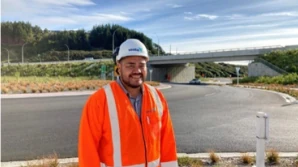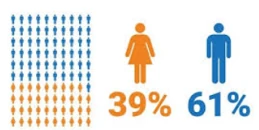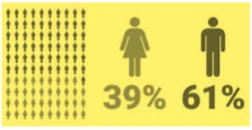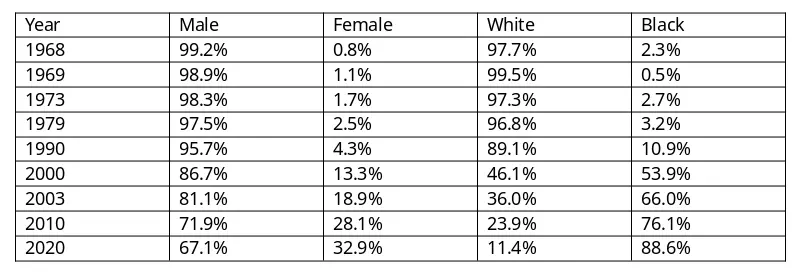Allyson’s career started in consulting where she learnt to apply her theoretical knowledge in South West Africa, South Africa and the UK.
Due to her interest in computer programming she moved on to develop and market civil engineering software and introduced low-cost design, CAD and GIS solutions to the South African market. As a result of her marketing efforts her name has become synonymous with civil engineering, and she was named IT personality of the Civil Engineering Century when the South African Institution of Civil Engineering (SAICE) celebrated its centenary in 2003. Although she has sold most of her software interests, AllyCAD is still widely used in South Africa and further afield.
As a result of her interaction with students and young graduates she became aware of the lack of support for workplace training and predicted looming skills shortages as South Africa geared up to develop substantial infrastructure for the Soccer World Cup, and to address economic growth. She has researched and published various Numbers and Needs books and reports and many papers on the skills challenges. In addition, she has led many capacity-building initiatives to rebuild skills in the public sector, including the innovative use of retired engineers to coach and mentor young graduates.
She has held senior office in local and international engineering institutions and has scored several firsts for women. She became the first female president of the South African Institution of Civil Engineering in 2000. She has served on many ministerial advisory panels associated with innovation, education, skills development and service delivery, and also on various committees of the Royal Academy of Engineering (UK), aimed at developing engineering skills in sub-Saharan Africa.
Allyson was declared the Shoprite Checkers/SABC 2 Woman of the Year in Science and Technology in 2007, was recognised by the National Science and. Technology Forum (NSTF) for her ‘Contribution to Scientific, Engineering and Technological Development’ in 2008, and was awarded an honorary doctorate (DEng) by the University of Stellenbosch in 2009. She has been made a Fellow by many institutions, including the Royal Academy of Engineering in London.



The announcement of the Strategic Infrastructure Projects (SIPs) in 2012 marked a new era in understanding the need for civil engineering practitioners and created opportunities for the government to understand and support our development needs. Working with the late DDG in the Department of Higher Education and Training (DHET), Adrienne Bird, it became possible to develop the CIDB Training Standard which public sector bodies could append to their tenders to include a requirement for training of apprentices and candidates alike, on large projects. It also finally offered an appropriate platform for campaigning for the need to recognise and fund graduate training and in November 2018, after starting the campaign in 2003, Candidacy was added to the learning regulations, which allows companies to access funds to contribute to their graduate training efforts. The graduate infographic is considerably different from the one at the outset of my career!

Women’s month is a reminder of the drastic change from the engineering workplaces of yesteryear to the diverse workplaces of today. The diversity we enjoy today allows the pollination of ideas from personnel with different experiences and perspectives which often lead to the development of innovative solutions. Women’s month offers the opportunity for us to celebrate the increasingly diverse engineering workforce and encourage all those with an interest in an engineering career to take the bold step and sign up!
This question always brings a smile to my face! In 1969, I received a letter from a listed mining company to whom I applied for a bursary to study engineering which advised that the company only awarded scholarships to male students. Need I say more about how the industry has evolved? There is, however, a lesson in this. Enraged, but not deterred, I continued to apply for bursaries. SAICCOR, the well-known manufacturer of dissolving wood pulp in Umkomaas came to my rescue, and I was able to enrol at the University of Natal in 1970 and graduate in 1973.
The acceptance and encouragement now given to women to enter the industry is gratifying. However, diversity is not the only change, but the technology change from using a slide rule in my final year of university to having so much technology, data, systems and even Artificial Intelligence available today is remarkable!
Yes, absolutely. Becoming an engineer or scientist is largely to do with your personality traits. Do you get satisfaction from thinking and using your judgement to solve problems, or are you a feeling and perceptive personality who would be more comfortable in a people centred career? For those who enjoy solving problems, an engineering career offers the opportunity to come up with a new solution for every challenge – whether for a new project, product, or system or to solve the problem when something has failed. This allows you to investigate, research, identify options, decide on a final solution and follow it to implementation, which is very satisfying.
Be bold, be brave and be the best! When starting a business, it is essential to have done your homework, know the market and make sure that the product or service you are going to offer is required and your offering will be something special. Once you are confident of this, cast off the doubts, be brave and get started. Business will not come your way; you need to go out and get it – which means you also need to be bold in marketing your business. Being the best means that you can never stop learning. Hard work is also part of the recipe. A huge research exercise carried out in the early 2000s showed that women who succeeded were hardy personalities i.e. they did not let any setback deter them. This is true for all who succeed, not only women, so to all with the entrepreneurial desire or wishing up to move up the career ladder, don’t forget, be bold, be brave and be the best!
We are on this earth to love and be loved.


